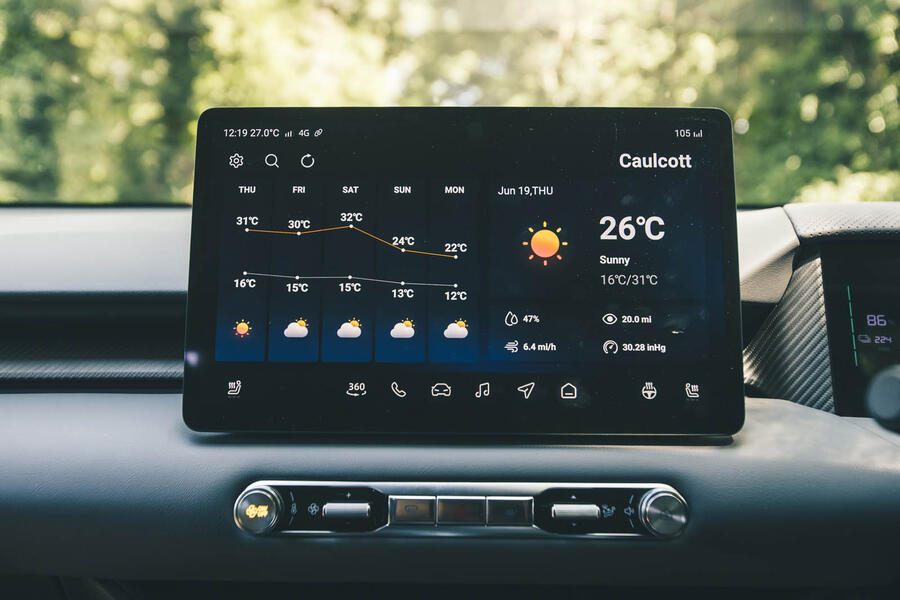Chinese car makers have already proven themselves responsive to market trends and fast to improve. Their progress has depended on it.
Even allowing for that, however, the interior of the S5 EV is likely to surprise people – and not only with its space but also its apparent material sophistication. It’s a real change of gear.
While the 4, ZS and HS all impressed us relative to our expectations, the S5 could just as well be from an established European maker. Consider, for instance, the pudgy plushness of its dashboard pad; the inviting, metallised material quality of many of its secondary controls; and the skill with which it mixes in materials such as Alcantara and faux carbonfibre to lift the overall ambience above the purely functional.
Not every model benefits from all of these materials, granted. Our test subject is a Trophy derivative and only here does the car get electric front seat adjustment and adjustable lumbar support, as well as heated front seats and a heated steering wheel.
But, as we’ll come to, even in Trophy trim, this isn’t an EV that’s priced at all ambitiously. Moreover, nowhere do its mouldings feel cheap or flimsy, so the expensive highlights don’t feel like a diversionary tactic. They feel like they belong.
Against the tape measure, there is more encouraging news. The S5 offers more second-row head and leg room than either a Renault Scenic E-Tech or a Kia EV3, though a little less than a Skoda Elroq
There’s plenty of adult-appropriate space in both rows; the back seats are well provided with amenities such as cupholders and power outlets (although, again, better in a Trophy model than an SE); and the boot has a proper height-adjustable floor, with a competitive below-the-parcel-shelf capacity of 453 litres (Kia EV3 460 litres, Skoda Elroq 470 litres) and equally competitive verified loading length and width.

Multimedia – 3.5 stars
MG claims that the S5’s 12.8in infotainment system represents a generational improvement compared with the one in the MG 4. In some ways, it doesn’t feel quite like that. The screen is slow to respond at times, and though it includes wireless smartphone mirroring as standard, it often needed extra prompts to reconnect to Apple CarPlay during our test.
But usability is notably improved by the simple provision of more physical controls: a ‘home’ menu button underneath the screen itself, which doubles as a volume knob for the audio system, and some tactile metallised rocker switches to control the heating and ventilation. These, provided as a result of customer feedback concerning touchscreen-dominated usability, take the onus off using the display for every little thing and, more often than not, keep you from needing multi-stage touchscreen interactions to find the particular function you need.
However, the home screen could still provide better direct access to frequently used functions, and there could be more useful quick-access toolbars at the margins of the display.


